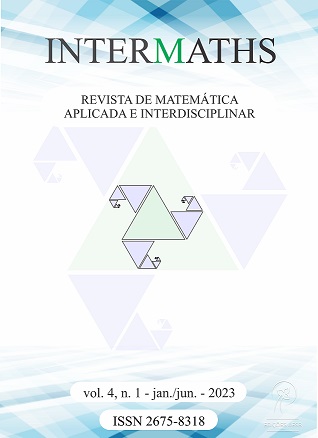Application of the 2-Step Reverse Differentiation Formula Method (BDF2) in Initial Value Problems
DOI:
https://doi.org/10.22481/intermaths.v4i1.11179Keywords:
LeVeque, Prediction-Correction, Zero StabilityAbstract
In this text, the results of the PVI resolution studies using the prediction-correction method are presented. For prediction, the explicit method of Adams-Bashforth was used and for correction, the implicit method of Adams-Moulton. The Retrograde Differentiation method in two long methods (BDF2) is used to solve a prediction correction problem with two lower-order methods of using a predictor and a verification method in the same way in the correct step and checking the order of BDF2 correction formula is zero-stable. The study of the BDF2 method to solve an implicit scheme requires, as a prerequisite, the Linear Steps or Multiple Linear Steps Methods (MLSMs), the Local Truncation Error (LTE) - to verify the consistency, and the characteristic polynomial to verify if the method is zero-stable.
Downloads
Metrics
References
J LeVeque, Finite difference methods for ordinary and partial differential equations: steady state and time-dependent problems , Society for Industrial and Applied Mathematics, 2007.
J. D. Lambert. Computational Methods in Ordinary Differential Equations , New York: John Wiley, 1973.
B. P. Sommeijer, L. F. Shampine and J. G. Verwer, “ RKC: An explicit solver for parabolic PDEs ”, Journal of Computational and Applied Mathematics , vol. 88, no. 2, pp. 315 - 326, 1998.
C. W. Gear Numerical Initial Value Problems in Ordinary Differential Equations , Englewood Cliffs, NJ: Prentice–Hall, 1971.
E. Hairer, S. P. Nørsett, and G. Wanner Solving Ordinary Differential Equations II. Stiff and Differential-Algebraic Problems, New York: Springer-Verlag, 1993.
L. F. Shampine and M. W. Reichelt, “The matlab ode suite”, SIAM journal on scientific computing, vol. 18, no. 1, pp. 1 - 22, 1997.
Published
How to Cite
Issue
Section
License
Copyright (c) 2023 INTERMATHS

This work is licensed under a Creative Commons Attribution 4.0 International License.
- Responsibility: The scientific content and the opinions expressed in the manuscript are the sole responsibility of the author(s).
- Copyrights: INTERMATHS.
- All content of Revista INTERMATHS/INTERMATHS journal is licensed under a Creative Commons - Atribuição 4.0 Internacional







